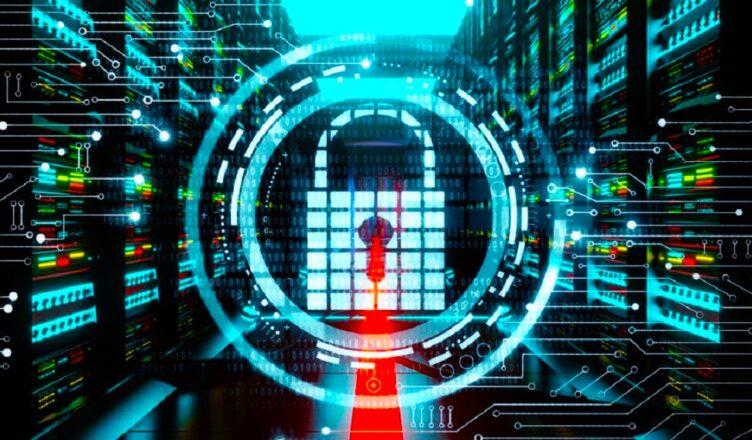Over the years, data centers have become increasingly important as they power our interconnected world. However, with this increased importance comes an increase in vulnerability. Data centers face various security challenges, including sophisticated cyber-attacks, insider threats, and espionage. With the rapid Internet of Things (IoT) expansion and increased network endpoints, managing security in such a complex and dynamic environment has become more challenging. It is, therefore, crucial to understand the various risks involved in data center security and develop comprehensive security solutions that can withstand the potential threats.
Core Security Features Every Data Center Should Implement
In fortifying a data center against cyber threats, several critical security features must be in place. The cornerstone of this protection is a multilayered firewall encompassing hardware and software elements to filter out unauthorized or harmful traffic. Accompanying this should be an Intrusion Detection and Prevention System (IDPS), which actively monitors for policy violations and known vulnerabilities, taking immediate action to prevent potential threats. Layered on top of these are sophisticated access control protocols, often utilizing multi-factor authentication to ensure that only authorized personnel can interact with sensitive data or infrastructure.
Enhancing Physical Security Measures
It’s easy to emphasize cyber threats and overlook the importance of physical security, yet they are equally critical. A comprehensive security strategy must account for natural disasters, theft, and vandalism. This involves robust environmental controls like climate management systems to protect sensitive equipment from overheating or moisture damage. Entry to a data center should be a heavily guarded point, with the latest surveillance technology and biometric scanning ensuring a formidable barrier against unauthorized physical intrusion. Ultimately, the goal is to create a secure environment that anticipates various risks, offering layers of deterrence and defense.
Data Protection and Privacy
Implementing stringent data protection measures is necessary to ensure the privacy and integrity of data housed within the data center. Encryption is the most effective tool for securing data, rendering it unreadable to those without the proper decryption key. Encryption protocols must be enforced rigorously whether the data is stationary or moving through the network. Alongside encryption, Data Loss Prevention (DLP) systems work to identify and block the potential exfiltration or inappropriate use of sensitive information, maintaining the sanctity of data privacy in line with global standards such as the General Data Protection Regulation (GDPR).
The Role of Network Security in Safeguarding Data Centers
Every data center’s network infrastructure is a potential entry point for attacks. Protective measures must extend beyond the perimeter to include the entire network architecture. Employing segmentation through virtual LANs and restricted access zones can effectively isolate sensitive data and services, curtailing the potential spread of a breach. The consistent use of Secure Virtual Private Network (VPN) connections is another critical precaution, encrypting data as it travels across less secure public networks. Additionally, regular security assessments like audits and penetration tests provide an in-depth review of network defenses and reveal weaknesses before they can be exploited.
Disaster Recovery and Business Continuity Planning
Data centers are not immune to the erratic nature of both artificial and natural disasters. An effective disaster recovery (DR) strategy is essential for minimizing downtime and data loss in an outage. This strategy should include on-site and off-site backups, allowing for quick restoration of services. Beyond mere recovery, a strong business continuity plan ensures that the core functions of a business remain operational, even in the face of a disaster. The readiness to continue operations under adverse conditions is a mark of robustness but also of foresight and resilience.
Navigating Regulatory Compliance and Certifications
Data centers serve as the repositories of sensitive information, naturally subjecting them to various regulatory requirements. Adherence to compliance standards is far from mere formality; it is a crucial driver of security protocols and processes. Certifications like ISO 27001 provide a framework demonstrating a data center’s commitment to maintaining the highest levels of information security management. This involves a process of regular reviews, updates, and audits to align with the dynamic landscape of legal and security standards.
Future-Proofing Your Data Center Security
In today’s rapidly evolving world, security is not a luxury but a necessity. To keep up with the constantly changing threat landscape and new technologies, data centers must continuously adapt and invest in new technologies and staff training. This ensures that their defenses remain current and effective. To further enhance their security, data centers can participate in cybersecurity forums and communities to share knowledge and resources and build collective resilience against threats.
Implementing a Security-First Culture Within Your Organization
When securing data centers, it’s essential to remember the human factor. Most security breaches occur due to human error or negligence. Therefore, it’s essential to create a security-conscious culture throughout the organization. This can be achieved by establishing strict policies and procedures and ensuring everyone understands that security is a shared responsibility. This academic study looks at the complexities and benefits of firewall technologies in network security and explores advanced firewall protection. With its predictive and preventative capabilities, integrating AI is quickly becoming a standard practice in data center management.

